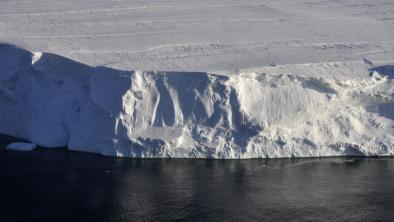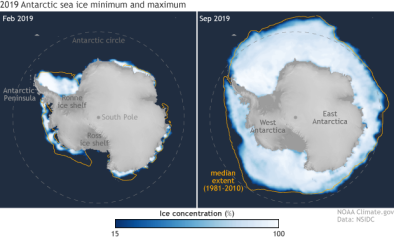Science Source
Mechanisms driving variability in the ocean forcing of Pine Island Glacier
We found a strong annual cycle in the exchange of heat between the ocean and the atmosphere, which drives changes in ocean temperature. While these changes are less evident in deeper waters, through convection and mixing the heat can penetrate deeply enough to have a major impact on melting and influence the temperature of the water entering the cavity under the glacier.
Dr. Ben Webber, study lead author and oceanographer at the University of East Anglia's School of Environmental Sciences
- Shows how the interactions between the ocean and the atmosphere, as well as changing currents, control how heat is transported to, and beneath, the Pine Island Ice Shelf
- Examines temperature and salinity records from within 10 km of the southern edge of the Pine Island Ice Shelf (PIIS), where the main meltwater outflow has been observed
- Examines mooring records from the continental shelf and the central trough at the shelf edge
- Demonstrates that there is considerable oceanic variability at seasonal and interannual timescales, including a pronounced cold period from October 2011 to May 2013
- States that this variability can be largely explained by 1) cumulative ocean surface heat fluxes and sea ice formation close to PIIS and 2) interannual reversals in ocean currents and associated heat transport within Pine Island Bay
- Concludes that local atmospheric forcing plays an important role in driving oceanic variability close to PIIS
- Results provide insight into the relationship between ocean circulation, temperature, and the retreat of and growing contribution to sea level rise by the Pine Island Glacier and nearby glaciers
Related Content
Headline

Jan 29, 2020 | BBC News
Journey to the 'doomsday glacier'
Headline

Nov 22, 2019 | NOAA Climate.gov
Understanding climate: Antarctic sea ice extent
Headline

Mar 26, 2019 | The Guardian
Australian researchers find huge lakes beneath largest east Antarctic glacier
Science Source
| Geophysical Research Letters
Mass Loss of Totten and Moscow University Glaciers, East Antarctica, Using Regionally Optimized GRACE Mascons
Yara Mohajerani, Isabella Velicogna, Eric Rignot


